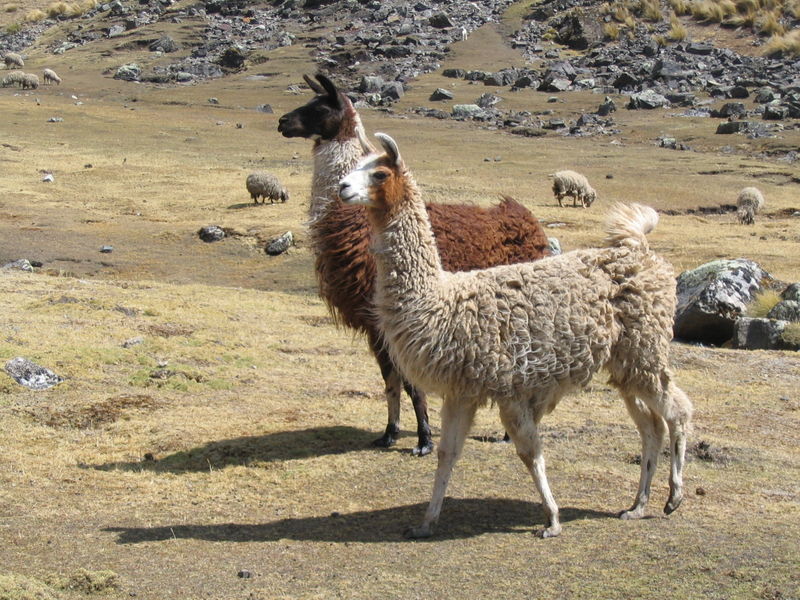Science News
Incans' Favorite Fertilizer
May 26, 2011
by Anne Holden

The Incan civilization, a vast empire encompassing much of western South America, was a force to be reckoned with. At its height in the 15th century, it was the largest and more complex pre-Columbia empire in the New World.
But according to new research published in the journal Antiquity, that empire may have had more humble beginnings. In a new study by Alex Chepstow‑Lusty of the Centre for Bio-Archaeology and Ecology at the University of Montpellier in France, the exponential growth of the Incan Empire relied in large part on the ability to grow and store significant amounts of maize, or corn. And that ability could not have arisen had it not been for a very important ingredient: llama droppings.
Maize first arrived in South America via Mexico about 5,000 years ago, but didn’t take hold in the Andes Mountains for another few thousand years. Why the delay? As Chepstow-Lusty told ScienceNOW, “Maize soon strips the fertility from the soils and needs to be replenished with fertilizer.” The key, he argued, were early farmers finding a readily available fertilizer to replenish the stripped soil. He believes that they found their answer in llama dung.
Llamas and alpacas were already a staple of Andean life, having been domesticated nearly 4,000 years earlier. Could their droppings have served to spur the success of maize agriculture?
Chepstow-Lusty tested this hypothesis by analyzing a core sample taken from a lake called Laguna Marcacocha, about 65 miles northwest of Cuzco, Peru, the heart of the Incan empire. This core sample showed a sharp increase in maize pollen starting about 2,700 years ago, which coincides with other archaeological evidence of the birth of maize farming in the region.
But Chepstow-Lusty noticed something else. Alongside the spike in maize pollen was a spike in a particular kind of insect, called oribatid mites. And one of this mite’s favorite foods? Feces.
Chepstow-Lusty believes that the spike in mites must be related to the spike in maize production. And sustainable maize production in the Andes Mountains likely relied on fertilizer to replenish the soil. Archaeological data show that Incans already used llama dung as fuel for cooking and for ceramics. Perhaps harnessing the power of the dung as a fertilizer was a logical next step.
“I think these were very motivated farmers and that somehow there was a big push to grow maize,” Chepstow-Lusty told ScienceNOW. With maize, which could be easily stored and traded throughout the region, the burgeoning Incan civilization could help feed more people, grow their population, and build out the civilization’s infrastructure.
Understanding the potential connections between maize farming, mites, and llama dung may require more digging, however. Chepstow-Lusty has yet to identify a link between the spike in these mites and use of llama dung specifically as fertilizer. Other reasons for the appearance of these mites must also be explored, as well as other potential types of fertilizer.
However, the importance of large-scale farming and the growth of civilization cannot be underestimated. Without grain, the growth of the great Egyptian and Mesopotamian civilizations could have stalled. And without maize – and maybe llama dung – the Incan Empire may have been just a small blip in the prehistory of South America.
Anne Holden, a docent at the California Academy of Sciences, is a PhD trained genetic anthropologist and science writer living in San Francisco.
Image: Anakin/Wikimedia